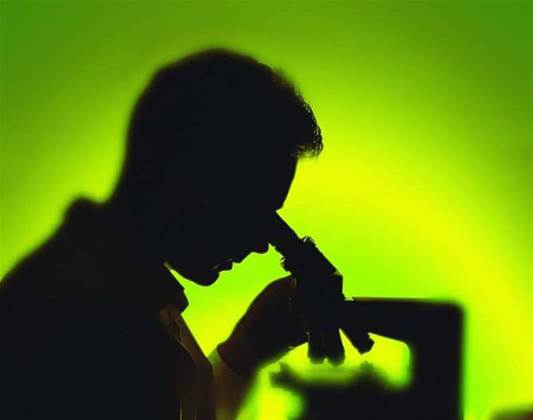
Developed by graduate students Nanfang Yu, Ertugrul Cubukcu and Federico Capasso from Harvard's School of Engineering and Applied Sciences, the laser incorporates two gold rods separated by a nanometre gap known as an optical antenna.
The incorporated quantum cascade laser emits invisible light in the region of the spectrum where most molecules leave their telltale absorption fingerprints.
The nano-antenna creates a light spot 50 to 100 times smaller than the laser wavelength which can be scanned across a specimen to provide chemical images of the surface with superior spatial resolution.
"There is a major push to develop powerful tabletop microscopes with spatial resolution much smaller than the wavelength that can provide images of materials, and in particular biological specimens, with chemical information on a nanometric scale," said Capasso.
Infrared microscopes based on the detection of molecular absorption fingerprints are commercially available and widely used to map the chemical composition of materials.
But Capasso explained that their spatial resolution is limited by the range of available light sources and optics to well above the wavelength.
Likewise, so-called near field infrared microscopes which rely on an ultra-sharp metallic tip scanned across the sample surface at nanometric distances can provide ultrahigh spatial resolution.
But applications are limited by the use of bulky lasers with very limited tuning capability and wavelength coverage.
"By combining quantum cascade lasers with optical antenna nanotechnology we have created an extremely compact device that will enable the realisation of new ultrahigh spatial resolution microscopes for chemical imaging on a nanometric scale of a wide range of materials and biological specimens," said Capasso.
Quantum cascade lasers were invented and first demonstrated by Capasso and his group at Bell Labs in 1994.

_(20).jpg&h=140&w=231&c=1&s=0)

.png&h=140&w=231&c=1&s=0)
_(22).jpg&h=140&w=231&c=1&s=0)





 iTnews Executive Retreat - Security Leaders Edition
iTnews Executive Retreat - Security Leaders Edition











_(1).jpg&h=140&w=231&c=1&s=0)



